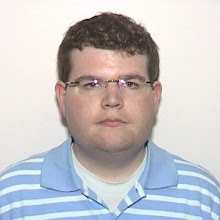These articles were very interesting because they made me realize the effort some of my music educators have put into this technology, and it made me think that I always need to do more with the latest software available. Attending high school in the late 90s, most of this technology was not yet available. Fortunately, I did have a band director who was always fond of making recordings of his band, and not just for the concerts. He would often record us in the middle of the semester to see how we were progressing on a particular work. Additionally, if we were about to go to contest, or travel and play somewhere, having adequate audio equipment was a great commodity because he would play back the recording, and we would always benefit from the experience. Usually we would be surprised in some sections saying things like, "did we sound like that," or, "Wow! We were really out of tune in this section, or not playing together." Often times, my band director would take copious notes on the recording and come prepared to discuss it with the band and make some appropriate changes. As a conductor I know that it is impossible to always hear everything, and you definitely want to hear what the microphone is hearing at the other end of the hall. It always made a huge difference, and I'm very grateful that even back then we had access to such important technology.
Recording has also been important for me personally in my development as a saxophonist. As I was growing up, I always had a cheap little recorder that I would use to tape my practice sessions. Although these were crude methods in the beginning, it did a lot to help me realize how I actually sounded. I learned early on that the tape recorder never lies. It may pick up things too loudly or have moments of distortion, but it will never lie as to how I actually sounded. And for me in my early student years, this was very important and I tried not to take it for granted. When I earned my undergraduate degree in Woodwind Performance, we used recording technology frequently. My Saxophone professor, for example, would often digitally record my lessons, and then provide a CD for me to go home and listen to. These were often humbling experiences! But they made me a better performer. We were also always required to tune to the computer, which also had the neat ability to reproduce our sound and play back what we sounded like. It also played the correct pitch and let us know how many cents flat or sharp we were. The oboe teacher in our school was known for recording herself every day. When she was a student in her younger days, she would record herself practicing and listen to the playback every morning as she was taking the bus into school. She would make notes about the things that she liked, and the things that could have gone better. But this technology really makes you aware of the evil truth about how we really sound!
I have used this technology for other important reasons too. One of the neat things I love to do as a saxophonist is play with an "artificial accompaniment" that is "smart." In other words, it will follow me and go at my pace. This is especially helpful as finding pianists who like to play saxophone literature is painful and expensive. Nobody wants to do it! The repertoire is difficult, and having this great technology has saved me hundreds of dollars in paying pianists to play for me. Now of course if I play a recital I will hire an actual, live pianist. But for rehearsal purposes, it really makes a huge difference, and this technology has been second to none in my life.
As far as visual learning is concerned, I'm still a beginner. Before this class, I really had never used software like "GarageBand" before, but I am quickly learning the benefits of it from day to day. One program that I have been familiar with is called "Audacity." This is a free program that allows you to upload sound files and manage them the way you want to create sound tracks. This program is also very intuitive and easy to use. I have created some interesting composition projects using this software, and I look forward to using it in the future. It is true what they say, "A picture is worth a thousand wordss." Looking at the actual sound waves has always been helpful, and I believe they could go a long way in teaching in the classroom. Many students are visual learners, so it is important for them to see what they are doing with sound. I look forward to incorporating this technology into my classroom, and I hope my students will have the same fun and inspiration as I certainly did.
Friday, October 9, 2009
Subscribe to:
Post Comments (Atom)

I know several band directors who take the same approach as the oboe teacher you mention with their ensemble rehearsals. Recording can be very beneficial to both students and teachers. We'll be spending some time with Audacity in class in a few weeks.
ReplyDelete